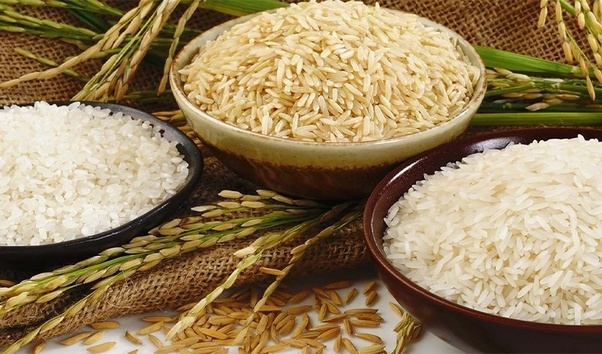Basmati rice, renowned for its fragrant aroma and long, slender grains, is a staple in many kitchens around the world. Originating from the Indian subcontinent, this variety of rice is celebrated for its distinctive taste and texture. In this blog, we’ll explore different varieties of basmati rice, highlighting their unique characteristics and culinary uses.
1. Traditional Basmati

Description: Traditional basmati rice is known for its exquisite aroma and delicate flavor. It has a long grain that elongates further during cooking, resulting in fluffy, separate grains.
Culinary Uses: This variety is perfect for biryanis, pilafs, and as a side dish to curries. Its fragrant quality enhances the overall dining experience.
Popular Brands: Tilda, Daawat, and Kohinoor.
2. 1121 Basmati

Description: The 1121 variety is a relatively newer type of basmati rice, known for its extra-long grain and high yield. It retains its length and texture after cooking, making it a popular choice for restaurants.
Culinary Uses: Ideal for dishes where the rice needs to remain separate and elongated, such as in kebabs or as a base for mixed rice dishes.
Popular Brands: India Gate, Royal, and Lal Qilla.
3. Pusa Basmati

Description: Pusa basmati rice is a hybrid variety, known for its excellent cooking quality and slightly nutty flavor. It is shorter in grain compared to traditional basmati but still maintains the essential fragrance and fluffiness.
Culinary Uses: Suitable for everyday meals, including simple rice dishes and as a complement to various curries and stews.
Popular Brands: Fortune, Kissan, and Agri-Business.
4. Chakra Gold Basmati

Description: Chakra Gold basmati is prized for its golden color and premium quality. It is known for its fine texture and aromatic qualities, making it a favorite for special occasions.
Culinary Uses: Excellent for making festive biryanis and pilafs. Its rich aroma pairs well with both vegetarian and non-vegetarian dishes.
Popular Brands: 24 Mantra Organic, Chawla, and Shree Vishwanath.
5. Kashmiri Basmati

Description: Grown in the Kashmir region, this variety of basmati rice is known for its unique aroma and slightly nutty flavor. The grains are slender and aromatic, with a distinct taste.
Culinary Uses: Perfect for traditional Kashmiri dishes such as Yakhni and Rogan Josh. It also works well in biryanis and pulaos.
Popular Brands: Kashmiri, Green Earth, and Kashmir Basmati.
6. Organic Basmati Rice

Description: Organic basmati rice is grown without the use of synthetic pesticides or fertilizers. It is appreciated for its natural flavor and environmental benefits.
Culinary Uses: Ideal for health-conscious individuals and those preferring a more sustainable choice. It can be used in any dish that requires basmati rice.
Popular Brands: True Elements, Organic India, and 24 Mantra Organic.
Tips for Cooking Basmati Rice
- Rinse Thoroughly: Wash the rice several times until the water runs clear to remove excess starch and prevent stickiness.
- Soak Before Cooking: Soak the rice for at least 30 minutes to allow the grains to expand and cook more evenly.
- Use the Right Ratio: Typically, use a 1:1.5 ratio of rice to water for basmati rice.
- Fluff After Cooking: Let the rice rest for a few minutes after cooking, then fluff with a fork to separate the grains.
Whether you’re a seasoned cook or just starting, exploring the different varieties of basmati rice can enhance your culinary adventures. Each type offers unique qualities that can elevate your dishes and bring a touch of aromatic elegance to your meals. Happy cooking!



